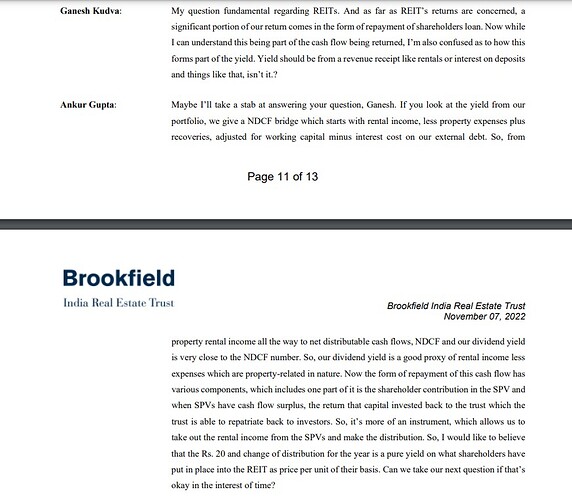A similar doubt regarding interest component was asked in the Brookfield con-call also. REIT’s generally hold the properties into SPV (Special Purpose Vehicle). This is done to transfer the property easily by selling the SPV and just paying capital gain taxes and to reduce and isolate risks from the holding co. Now when these SPV receives rent, and have surplus cash they are transferred back to the REIT in the form of interest and repayment of shareholder loan. This is mere an accounting practice.
Regarding your other doubt about return on capital, REIT’s have to mandatorily distribute 90% of the collection to unitholders. So they have very less cash balance left to grow the assets and hence the increase the GAV, NOI and hence the distribution to the unitholders. Hence the fund manager has 2 options-
- Keep distributing full amount of collection to the unitholders and don’t take any debt. In this case the NOI would only grow at the pace of rent escalations as the growth in the total area would be very slow (as only 10% of cash would be left).
- In the second option the fund manager would use the property they already have, and by pledging them will raise debt and then use these funds to buy or construct new properties. This would lead to faster growth in the total area.
Therefore trust managers by using the same assets they have, are able to generate better returns for the trust holders by taking debt. The principal amount of these debts are generally paid back by raising further debt at the time of maturity and the interest gets paid back from the cash flow generated by rents.
In some cases at the time of acquiring new properties the REIT issues a combination of equity and raises debt to fund the asset. Even in such cases it is done in such a way that it is DPU accretive for the unitholders.
I hope this solves your doubts.
| Subscribe To Our Free Newsletter |


